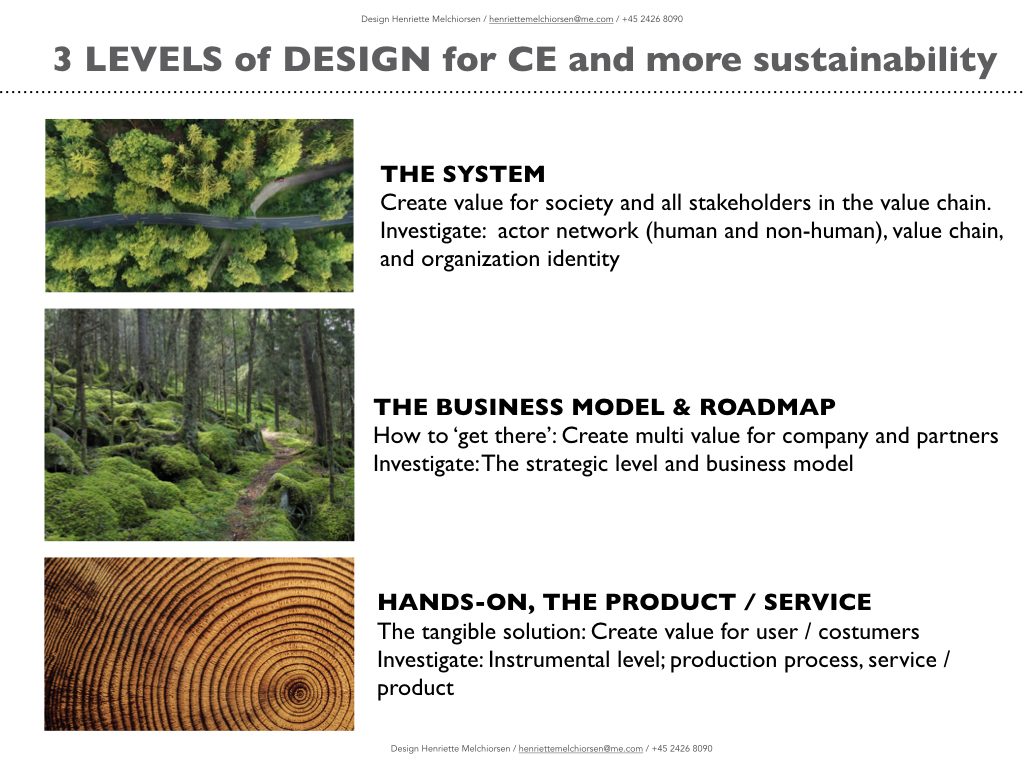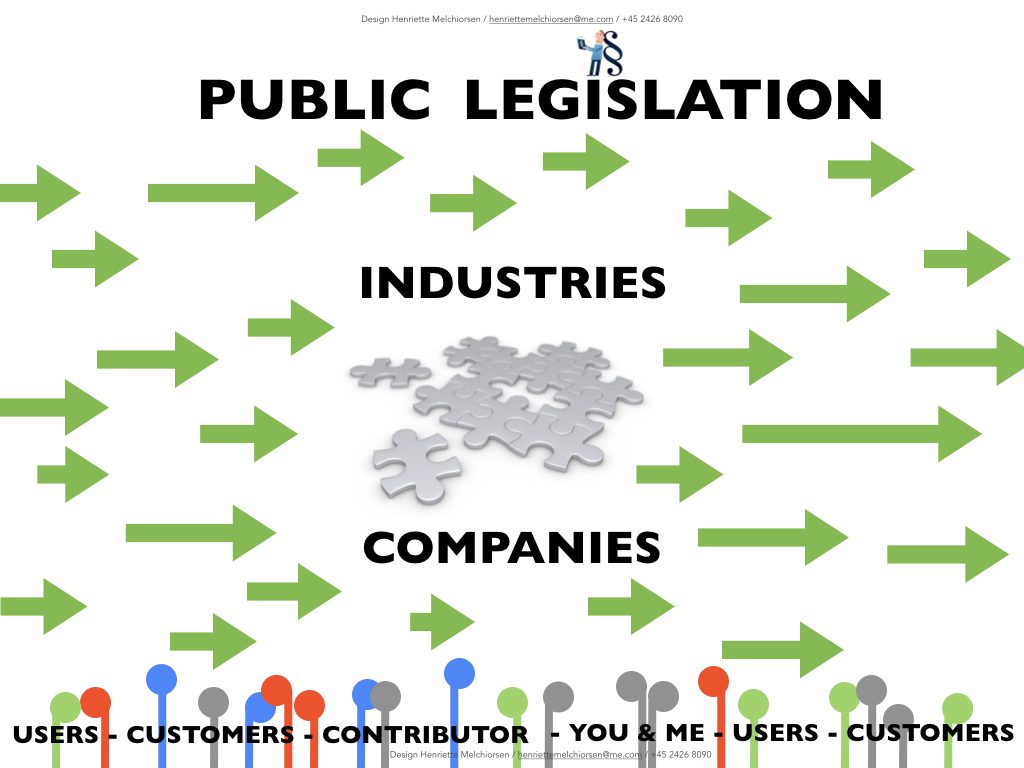
When giving lectures and talks in educational and business environments on – how to transit to a greener business or circular economy with more sustainable production the slide above is often requested afterwards. The details of a green transition of cause varies according to main business and the value being created for the receivers. But on a theoretical level I find that there are three important perspectives to look for – and these three levels of approach recur in most cases. My advice is to be aware of the three levels, and also to be aware – on what level you are working.
I got the inspiration to define the three perspectives for designing for more sustainability and circular economy from reading work by Professor for Corporate Sustainability at ESCP, Europe Business School in Berlin Florian Lüdeke-Freund. His work on levels for Value Creation in companies pointed at the perspectives. After meeting Lüdeke-Freund I had the pleasure of being part of an expert board on business models and here contributing to work done at the Business School by Sarah Carroux ao. on – 45 patterns to support sustainable business model innovation.

In debates about climate change and the necessary actions of change we are facing, I often hear discussions about who should do what first. Here I often get to think of a Danish cartoonist, Anders Morgenthaler who participated in a debate where politicians intensely discussed, who should who do first. He interrupted and said: The kitchen is on fire and you discuss who should fetch water, WE MUST ALL GET WATER NOW.
I made the illustration above to communicate, – how I see the landscabe of action for us all to see – where we can contribute and participate, and not relay on others to do the necessary.
There are ‘top-down’ decisions that countries leading politicians must take to guide citizens in direction of change, along with new laws that need to be drafted, for us all to head for a future of common good. Vote for that change, vote for a new patch. At the same time there are the ‘bottom-up’ everyday choices for me and you and everybody else to take. Some argue that it feels like a drop in the ocean, but I think: what would the oceans be without all the drops? We, as consumers – hold the power to change by ‘voting with our wallet’ every time we buy something. Buy new-old things. Give longer life to the items you have and need in your life by repairing. Pass it on, if you don’t need it any longer. And in the end hand it in for reuse. By becoming a conscious consumer we all take part in this change, and by ‘voting with our wallet’ we choose who to support. We the consumers decide what companies and organisations should grow. That is the operating middel of the landscape. Companies are driving the ‘material’ transition and we consumers are pushing the scaling up by becoming conscious consumers – acting and buying with heads and hearts. Go for it.
